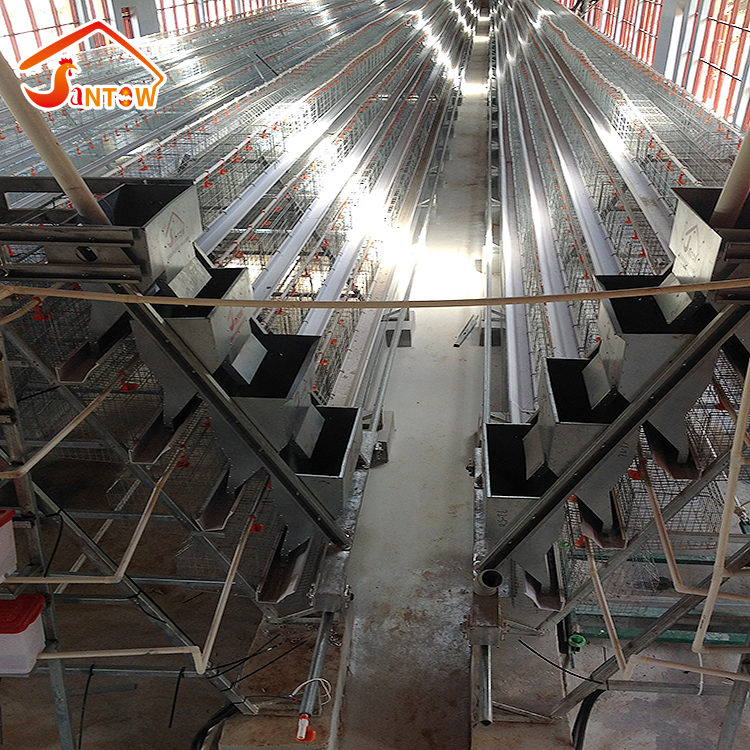

PRODUCT
CONTACT US
ZhengZhou Santow Agro Equipment Co., Ltd
Hotline:+86-371-5598 1030
Fax:+86-371-5598 1030
Phone:+86-187 6889 2838
Mail: sales@santow-agro.com
How to Rear Brooding? Broiler Brooding Rearing Tips
Farmers some times find it difficulties in rearing small chicks. So now please keep
your ear to the ground ...
Brooding the first 48 hours with a good start is a vital necessity for broiler chicks
performance.
Remember that your Good Start is paving for great results
Your burds' subsequent health, welfare, uniformity and performance for the rest of
their life will be achieved if these factors are considered;
(Please scan QR Code for 720 Factory Panoramic View)

1. Shed Preparation
House and farm cleaning / sanitation plus disinfection should be completed prior to
receiving chicks.
Pre heat brooder for 24 - 12 hours before chicks arrive
Air temp 32-35 C whole house
Spot Brooder edge 32C , 2 m from edge 29C.
Floor temp 29 – 31 C
Relative humidity 50 – 60% RH. >45%
Chick stock density – max 35 chicks/m2
Food and water in pens on chick arrival
Light intensity >30 – 60lux over brood area
Also Read: Vaccination Program for Layers and Broilers
2. Brooding Setup
Aim for maximum 35 chicks / m2
Pens should be set up as follows
>50% of the brood area covered in paper, feed on the paper and in trays / pans / trough.
Allow 12 chicks per nipple or 50 chicks per baby drinker.
80 - 100 chicks automatic drinker.
50 chicks per supplementary feeder
3. Temperature
Follow Arbor Acres standard recommendations for brooding temperatures. Down load
a * BROILER BROODING GUIDE* Adjust if needed, but with help of a vet.
Temp and Relative Humidity % should be checked a minimum of 2-3 times a day inside
the brood area
Monitor temperature and Relative Humidity % with thermometers inside the brood pen
Monitor body temperature
Ideal first 7 day relative humidity should be 60% for DOC
Minimum ventilation should be running from Day 1. This includes opening the tarpaulins
for 2 hours a day!, at different times in a day.
Also Read: Indispensible nutrition for raising broiler
*Interaction of Temperature & Humidity*
Variation in humidity will influence the effective temperature experienced by the chicks
High humidity increases the apparent temperature
Low humidity decreases the apparent temperature
*Brooding Temperature Effects*
Too cold: - chicks will huddle and not start well. Chilled chicks will suffer and become un uniform
Too hot: - depressed appetite, dehydration and slow feathering
Variation from target temperature will cause uniformity problems
4. Feed
Chicks do not recognise ‘feed’ as ‘food’ – will peck at floor
Chicks will only pick up feed particles that are interesting. For this reason, start chicks on GALDUS
STARTER crumbles from kafiika animal feeds for 6 days.
Fresh feed, and evenly spread available on chick arrival – flat surface
Available on paper and supplementary pans. Given 5-
6 times per day. This will help stimulate their appetite – fresh feed
Chicks should not travel more than 1 m for feed and water. Place feeds and water adjacent such
that birds can easily locate them.
Also Read: How to improve feed efficiency in broiler
5. Water
Brooding area should contain a plentiful supply of fresh water
Use supplementary drinkers as well as the automatic drinking system.
Re-fill often and clean daily as open source drinkers are prone to bacteria rapidly multiplying in
brooding temperatures
gradually withdraw supplementary drinkers after 3 days
Water should be around 20 C in temperature – never give cold water to chicks
All water given to the chicks should be treated, chlorination is the most common method. Except
for when vaccinations will be administered
6. Light
Bright light for the first 5 days – 30 – 60 lux in the brood area.
23 hours light and 1 hours darkness for first 48 hours.
Short periods of darkness can be given in the first few days to help stimulate appetite
Light must be evenly spread throughout the brooding area.
